How did the ancient royal court celebrate Spring Festival?
|
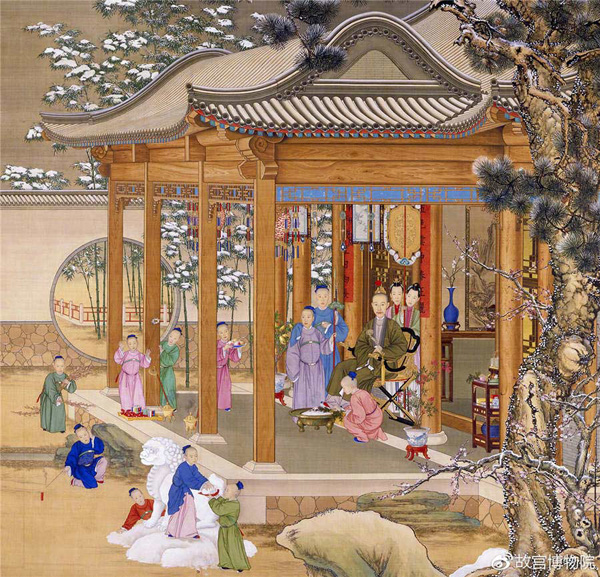
The painting portrays the Emperor Qianlong in the Qing Dynasty enjoying snow in the royal palace during the Spring Festival. [Photo/Official Weibo account of the Palace Museum] |
Special clothes and foods
Like common people, the ancient emperors would wear special clothes and arrange a special dinner for the big occasion.
On the Chinese New Year's Eve, the final day of the 12th month in the Lunar Calendar, the emperor would solemnly wear a bright yellow dragon robe stitched with gold and colored thread, and embroidered with dragon patterns and 12 ornaments. The emperor would also wear a fur coat, a crown on the head and court beads on chest. The whole garment in bright colors symbolizes auspiciousness and a prosperous nation.
|
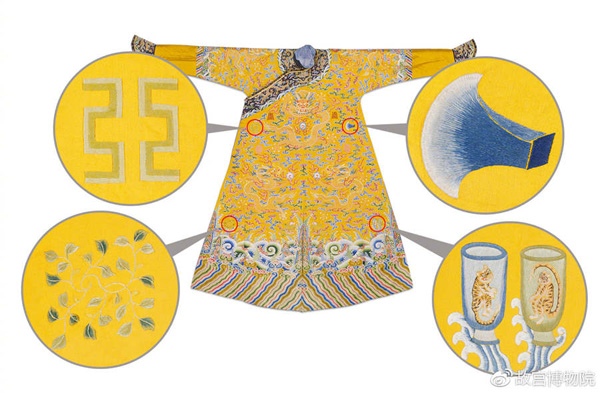
A dragon robe from the Qing Dynasty. [Photo/Official Weibo account of the Palace Museum] |
The first dinner in the Qing Dynasty (1644-1911) royal court was dumplings, just like common families. During the early Qing Dynasty, the emperor would eat dumplings with vegetable filling in Zhaoren Hall after the worship ceremony on New Year's Eve.
Until the late Qing Dynasty, the Guangxu Emperor changed the dumpling eating location to the Hall of Mental Cultivation (Yangxin Dian) and the stuffing became various kinds of meat. The Empress Dowager Cixi would invite wives of royal families and princesses to the royal court to make dumplings together on New Year's Eve and sit together for a dumpling feast on the early morning of the New Year's Day.
In addition, family feasts were also indispensable. The emperor would host family feasts with the queen, concubines and princes respectively. The feasts were held strictly in accordance with etiquette, such as the number of dishes, the color and quality of the tableware as well as the order of seats. Though called a family feast, the form and etiquette are more important than appetite.
|

A delicate flower-patterned plate set from the Qianlong period of the Qing Dynasty. [Photo/Official Weibo account of the Palace Museum] |
The royal court also obeyed the traditional custom of staying up all night on New Year's Eve, so a midnight snack would be prepared for the emperor, which always included fresh and dried fruit displayed in auspicious patterns.
Entertainment during Spring Festival
At the end of the New Year's Eve, also the start of the Chinese New Year, the emperor would wear formal dress and walk to the Dongnuan Pavilion in the Yangxin Dian, lighting a jade candle, pouring wine into the Cup of Solid Gold and then write auspicious words for the new year such as "Peace reigns over the country" or "Propitious weather for the crops". Then the emperor would drink Tusu wine, specially made for the Spring Festival, meant to get rid of plague and strengthen the body for the new year.
|
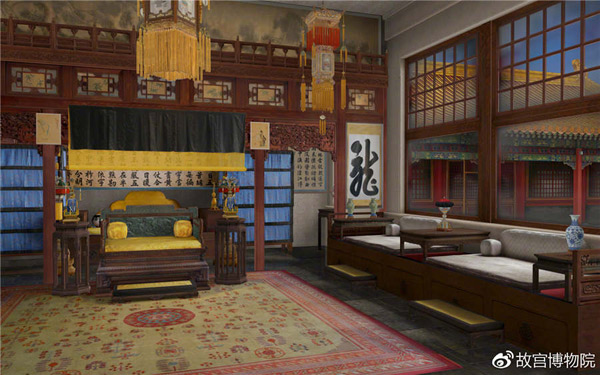
The Dongnuan Pavilion in the Yangxin Dian of the Forbidden City. [Photo/Official Weibo account of the Palace Museum] |
|

The Cup of Solid Gold from the Qing Dynasty (L); A writing brush used by ancient emperors from the Qing Dynasty. [Photo/Official Weibo account of the Palace Museum] |
From the second day of the first lunar month to the 10th day, an auspicious day would be chosen to hold a tea party, in which the emperor would invite dukes and ministers to create poetry under his rule and well-performed officials would be rewarded.
During the ancient times when there was no television, a major recreation in the royal court was watching Chinese operas, which had to be lively and auspicious. Several emperors in the Qing Dynasty would act in operas themselves, such as the Qianlong Emperor, Daoguang Emperor and Tongzhi Emperor. The Guangxu Emperor could even beat drums.
|
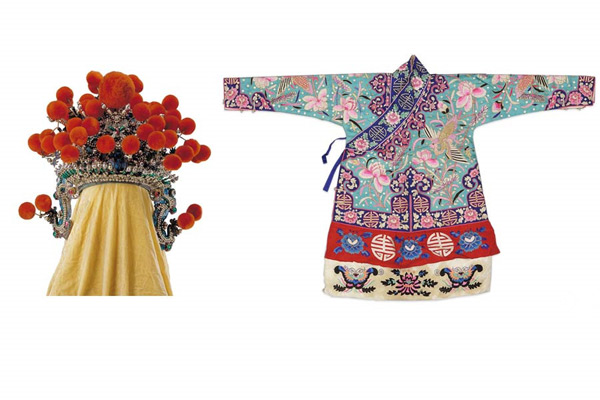
A helmet (L) and a garment used in opera performance from the Qing Dynasty.[Photo/Official Weibo account of the Palace Museum] |
Hanging spring couplets and pasting door gods
Hanging spring couplets and pasting door gods is a major custom during the Spring Festival. But in the Forbidden City, with its many palaces and doors, that would require a great deal of labor.
The spring couplets in the royal court were mainly written by members of the Imperial Academy who were scholars of calligraphy. However, as there were many taboos in writing spring couplets, they could not showcase their talents entirely.
|
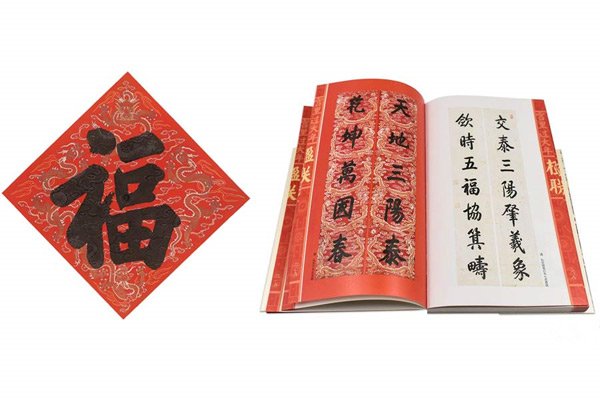
Regular script of the Chinese character fu (blessing) from the Qing Dynasty (L); Spring couplets from the Qing Dynasty. [Photo/Official Weibo account of the Palace Museum] |
The Ministry of Works and the Imperial Household Department were in charge of making the spring couplets and door gods in the royal palace, which would usually be expensive.
|

Door gods from the Qing Dynasty. [Photo/Official Weibo account of the Palace Museum] |
Unlike folk families, the spring couplets in the royal palace were written on white silk using ink, then framed and hung on the bright red pillars of the palaces. Thus the color contrast was enhanced to make the spring couplets more clear.
The couplets in the royal palaces were quite numerous and were mostly themed on eulogizing peaceful and flourishing eras, the emperor's merits and virtues, or blessings for a prosperous country and contented people.
No matter the superior emperor or common people, whether the ancient royal palace or modern families, the joyous mood and blessing for a better year during the Spring Festival has never changed.
|

[Photo/Official Weibo account of the Palace Museum] |
Qian Xi advertising would send our best wishes to all of our customers, partners, staffs, and wish all of you a prosperous new year 2018, filled with health, peace and rejoicing!

Previous:Xiao Nian Festival Greetings from Qian Xi
Next:We will attend the DPES Sign Expo held in Guangzhou on Mar.0
Our Target:
Try our best to be an outstanding outdoor advertising product manufacturer.
Our Mission:
Benefit more customers,and develop ourselves.
